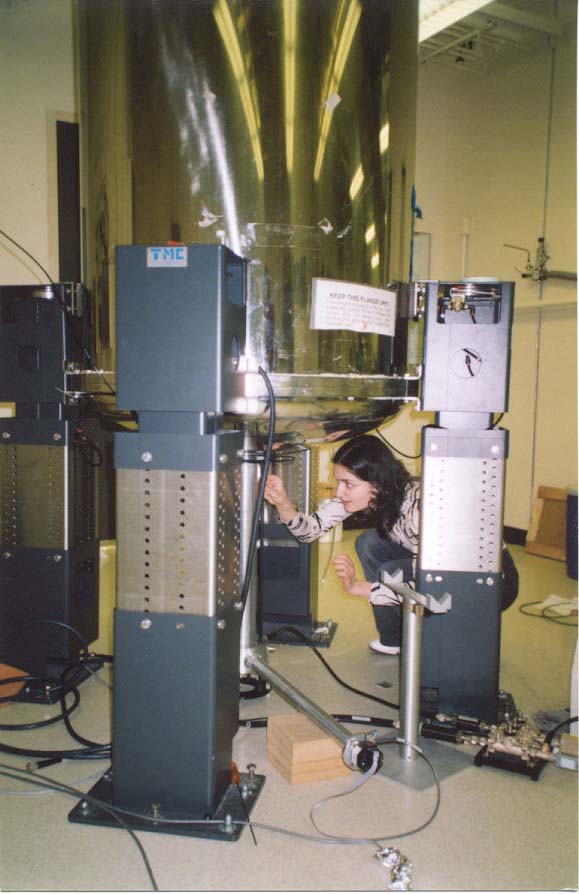







NMR of oriented molecules provide additional information about molecular properties through anisotropic parameters, such as dipolar and quadrupolar couplings, anisotropies of chemical shifts. For example, below is the scheme of non-oriented and oriented NMR spectra of acetonitrile. In oriented spectra of different nucleus and isotopomers we can measure XH (X=13C, 15N) and HH dipolar couplings, 2H quadrupolar couplings, as well as chemical shift anisotropies of all nuclei. These parameters cointain information about 3D molecular and electronic structure.
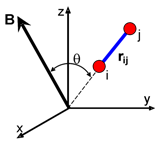

NMR of oriented molecules allows to study molecular structures as well as dynamics in solution. Solid state NMR gives another advantage over X-Ray; possibility to study membrane proteins. We are interested in making NMR method of molecular structure determination as easy, routine, recognized, and informative as X-Ray diffraction method. For example, analyses of the spectrum of oriented biphenyl gives possibility to determine the torsion angle between phenyl rings, which found to be different for various para-halosubstituted compounds.
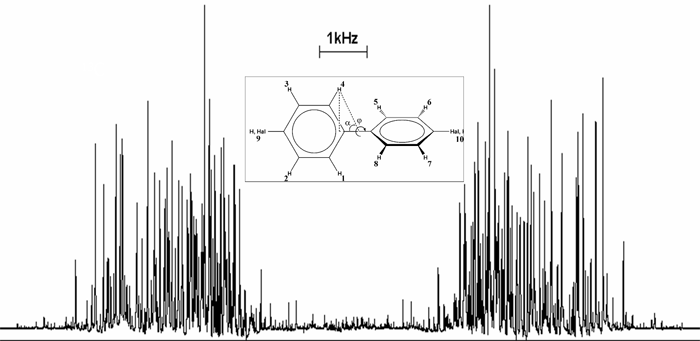
We strive to solve some problems in NMR structure determination connected with accuracy and reliability of the data obtained from anisotropic parameters. The problem is known since the development of the method, but still there is no good and applicable theory to explain deviated structural data and suggest easy solutions. We already suggested few ideas, which now are being explored further. For example, we found that some liquid crystals with certain magnetic and electric properties are not suitable as an aligning medium for precise molecular structure determination due to the anomalous data observed in them (J. Mol. Struct., 2005, 743, 217).

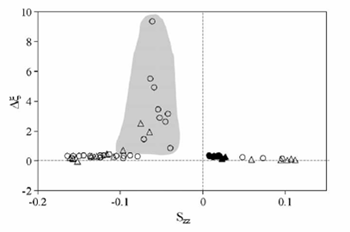
Search and development of orienting media wtih desired properties, wide applicability, great stability and easy maintenance is very important and ongoing task. We have worked with many types of orienting media, including weakly aligning micellar solutions with four components surfactant/water/salt/alcohol, where surfactant can be positively charged CTAB, CPBr, CPCl, CTACl, and negatively charged SDS, PL, as well as noncharged three component systems based on polyethylene glycol as well as thier mixtures known as glucopone, strongly aligned thermotropic liquid crystals, strongly aligned lyotropic systems, aqueous polymeric gels, phospholipid solutions known as "bicelles", phages, amphotropic liquid crystals. I would like to develop some of these media to imrove their properties. I am especially interested in amphotropic liquid crystals, weakly aligned micellar solutions and various gels.


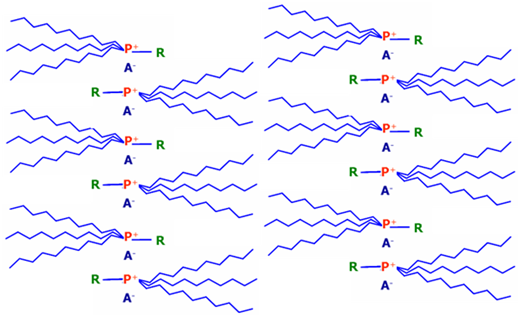
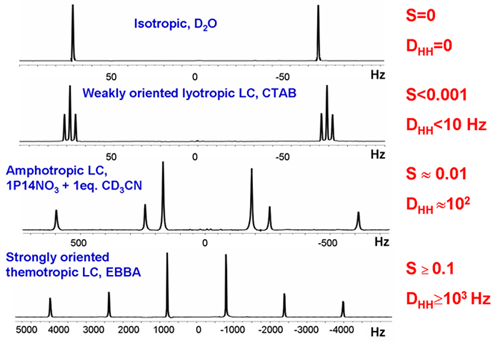
Our hypothesis about dependence of one-bond indirect spin-spin coupling on electric field can help to map electric fileds in biomolecules. For example, we found correlation of NH one-bond indirect coupling constants with the projection of the electric field along the bond (J. Phys. Chem. A., 2008, 112, 3576-3586).
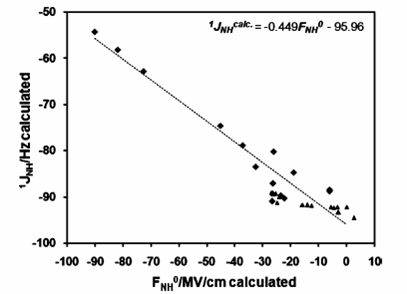
Since we have more than 300 users, mainly chemists specializing in drug design, we exploit various techniques to reveal structural and conformaional peculiarities of potential drugs.
